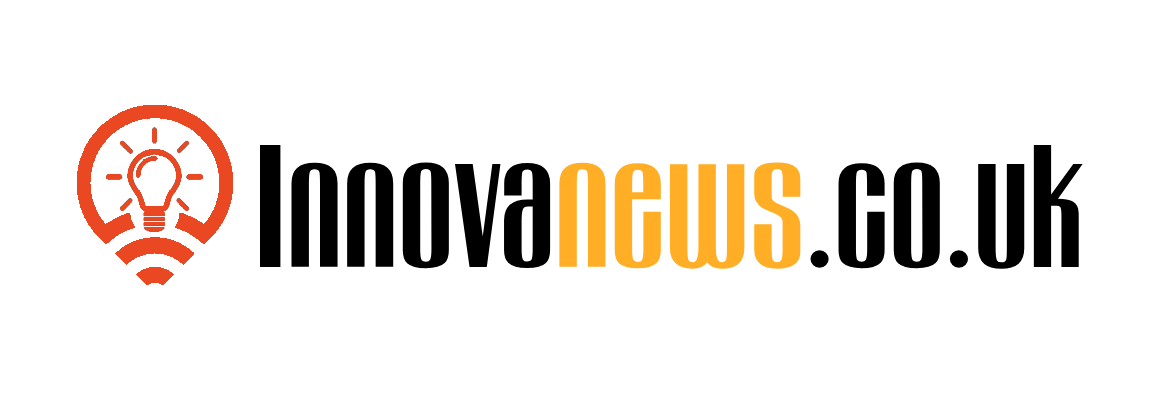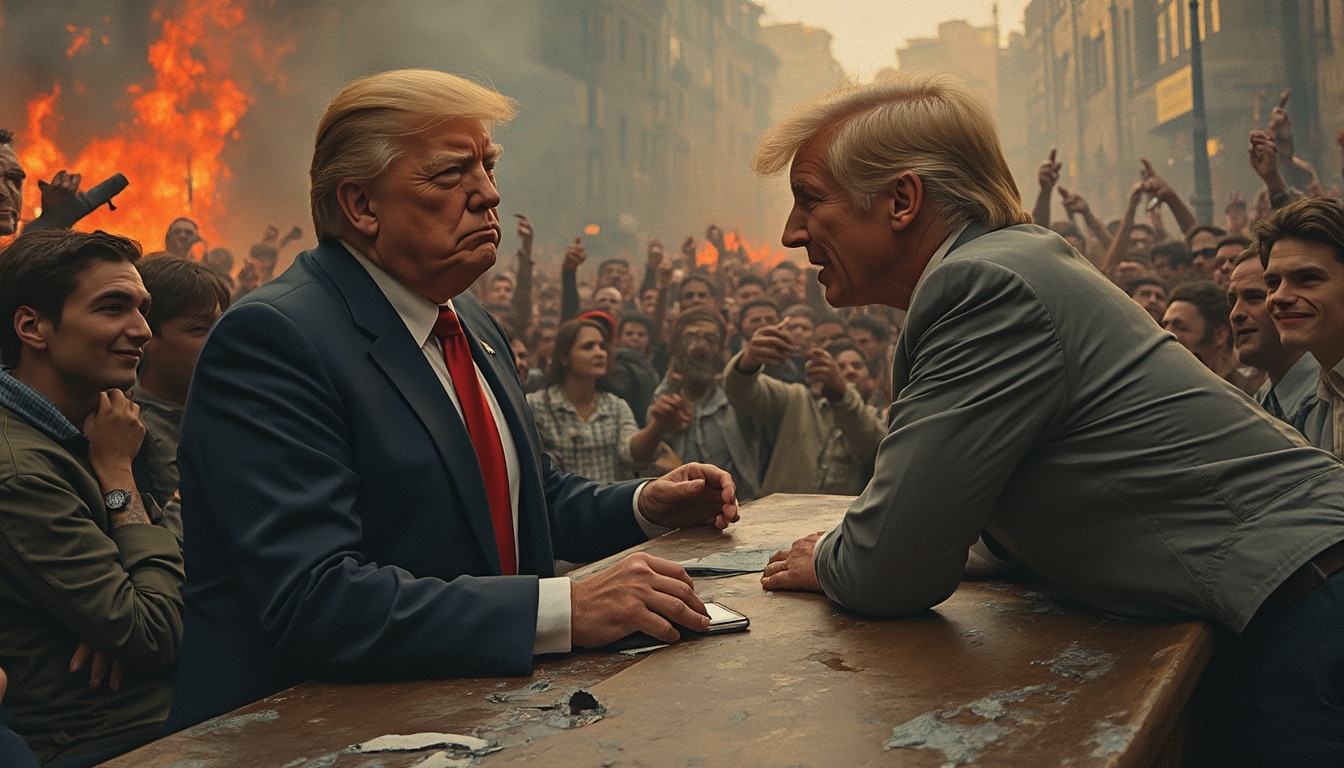In a groundbreaking move this Monday, former President Donald Trump took center stage in the battle against online exploitation. He signed the pioneering federal law known as the “Take It Down Act,” marking a significant stride in digital protection. This legislation aims to curb the unauthorized spread of explicit images, including the notorious deepfakes.
The newly minted law targets pornographic content that’s generated or shared without the involved parties’ consent. With a focus on reducing sexual exploitation online, the « Take It Down Act » introduces strict penalties, including hefty fines and potential prison time for violators. Trump emphasized, « We will not tolerate sexual exploitation on the internet, » highlighting the administration’s commitment to this cause.
Under the « Take It Down Act, » digital platforms are now required to remove offending content within 48 hours of being notified by the victim. This mandate extends to all web entities, from major social media networks to specialized porn sites and forums. Additionally, these platforms must ensure that all copies of the illicit material are eradicated from their servers, leaving no digital trace behind.
Previously, only certain state laws addressed the dissemination of sexually explicit deepfakes and revenge porn. The federal government’s intervention with the « Take It Down Act » represents the first nationwide legislation of its kind in the United States. During the signing ceremony, Trump was joined by both Republican and Democratic leaders, underscoring the bipartisan support this law has garnered.
First Lady Melania Trump played a pivotal role in championing this initiative, reinforcing her dedication to combating cyberbullying and harassment. Her advocacy was instrumental in garnering support across party lines, demonstrating a rare unity on pressing digital issues. The bill was spearheaded by Senators Ted Cruz of Texas and Amy Klobuchar of Minnesota, symbolizing cooperation between Republicans and Democrats.
Senator Ted Cruz shared a harrowing story about a 14-year-old girl whose deepfake was left online for a year on Snapchat despite multiple removal requests. This incident was a catalyst for the development of the « Take It Down Act, » highlighting the urgent need for stronger legal measures. However, not everyone is on board; some digital rights groups express concerns that the law might inadvertently target legitimate content, such as consensual pornography or governmental critiques, potentially leading to arbitrary censorship.
The debate continues as stakeholders weigh the benefits of protecting individuals from online exploitation against the risks of overreach and unintended consequences. As the « Take It Down Act » takes effect, its real-world impact will unfold, shaping the future of digital content regulation in the United States.

Table of contents
ToggleTrump takes a stand against explicit deepfakes with the ‘take it down act’
In a groundbreaking move this Monday, Donald Trump signed the federal « take it down act », a historic law aimed at curbing the spread of explicit images and deepfakes without consent. This bipartisan legislation marks the first of its kind in the United States, reflecting a significant shift in the government’s approach to online protection and digital ethics.
what is the take it down act and why is it important?
The « take it down act » is a comprehensive legal framework designed to prohibit the dissemination of non-consensual explicit content, including deepfake technology. This law targets the creation and distribution of pornographic material that is generated or shared without the individual’s consent, aiming to significantly reduce online sexual exploitation. By addressing both traditional explicit images and advanced deepfakes, the act acknowledges the evolving nature of digital content manipulation and its potential for harm.
This legislation is particularly important as it provides a federal standard, filling the gaps left by previous state laws. Prior to this act, only certain states had measures against deepfake pornography or revenge porn, leading to inconsistent protections for victims across the country. The take it down act ensures a unified approach, making it easier to prosecute offenders and protect victims no matter where they are located.
what are the penalties under the take it down act?
The take it down act introduces stringent penalties for those who violate its provisions. Offenders may face hefty fines and potential prison time, depending on the severity of the offense and the extent of the non-consensual distribution. Additionally, the law mandates financial compensations for victims, recognizing the emotional and psychological toll that such violations can inflict.
Under this act, both images and videos—whether manipulated or not—are treated as federal offenses if shared without proper consent. This expansion of legal responsibility underscores the government’s commitment to combating online abuse and holds digital platforms accountable for the content they host. For instance, platforms like Snapchat, which previously failed to act promptly in cases such as the 14-year-old’s deepfake, will now be legally obligated to respond swiftly to removal requests.
how will digital platforms enforce the new regulations?
Digital platforms are a critical component of the take it down act‘s enforcement strategy. The legislation stipulates that companies must remove offending content within 48 hours of being notified by the victim. This rapid response requirement is designed to minimize the duration that harmful content remains online, thereby reducing its impact. Furthermore, platforms must ensure the complete deletion of all copies of the prohibited material from their servers, preventing any future dissemination.
This requirement applies to a wide range of online entities, including social media networks, pornographic websites, and specialized forums. By holding all digital platforms to the same standard, the act aims to create a more consistent and effective defense against the spread of non-consensual explicit content. Additionally, this proactive approach encourages platforms to develop better detection and removal technologies, fostering a safer online environment for all users.
what sparked the creation of the take it down act?
The inception of the take it down act can be traced back to a poignant incident highlighted by Senator Ted Cruz from Texas. Cruz recounted the distressing case of a 14-year-old girl whose deepfake remained on Snapchat for an entire year despite her repeated requests for its removal. This blatant negligence by the platform underscored the urgent need for federal intervention.
Motivated by such incidents, Senators Cruz and Amy Klobuchar of Minnesota—a Republican and a Democrat respectively—brought together a coalition of lawmakers to address the pervasive issue of online sexual exploitation. Their collaborative effort demonstrated a rare bipartisan agreement on digital rights, emphasizing the widespread recognition of the problem and the necessity for a unified legislative response.
The committee meetings and debates that followed cemented the take it down act as a pivotal step in the fight against misuse of digital technologies. By focusing on both the technological aspects, such as deepfake generation, and the human elements, including victim support, the act provides a comprehensive solution to a multifaceted problem.
what role did Melania Trump play in this legislation?
Melania Trump, the First Lady, played a significant role in championing the take it down act. Her active support was instrumental in galvanizing bipartisan backing for the legislation, reflecting her ongoing commitment to combating cyberharassment and protecting individuals from digital abuse.
Through her advocacy, Melania brought attention to the personal and societal impacts of online exploitation. Her involvement helped bridge the gap between political parties, making it easier to secure the necessary votes to pass the act. By leveraging her public platform, she emphasized the importance of creating safer online spaces and the government’s role in ensuring digital accountability.
what are the concerns surrounding the take it down act?
Despite its noble intentions, the take it down act has faced criticism from several digital rights groups. These organizations express concerns about potential overreach and the implications for free speech. Critics argue that the law could inadvertently affect legitimate content, such as consensual pornography and government criticism, leading to unintended censorship.
One major worry is the possibility of arbitrary enforcement, where platforms might overzealously interpret the law to remove content preemptively, stifling legitimate expression. Additionally, there are fears that the act could be used to target dissenting voices or restrict lawful content under the guise of protecting victims. These concerns highlight the delicate balance between safeguarding individuals from exploitation and preserving the fundamental freedoms of expression and privacy.
To address these issues, it is crucial for lawmakers to include clear guidelines and safeguards within the legislation. Ensuring transparency in the enforcement process and providing avenues for appeal can help mitigate the risks of misuse. Ongoing dialogue between legislators, digital platforms, and civil liberties organizations will be essential in refining the act to protect both victims and free speech.
how does the take it down act compare to previous state laws?
Before the take it down act, only a handful of states had enacted laws addressing deepfake pornography and revenge porn. These state-level measures provided limited protections and created a patchwork of regulations that varied significantly across the country. Victims in states without such laws faced greater challenges in seeking justice and removing harmful content.
The take it down act stands out as the first federal law tackling the issue comprehensively. By establishing uniform standards nationwide, it eliminates the inconsistencies and ensures that all Americans receive the same level of protection regardless of their state of residence. This national approach enhances the effectiveness of legal remedies and simplifies the process for victims seeking redress.
Moreover, the federal scope of the act allows for more robust enforcement mechanisms and higher penalties, deterring potential offenders more effectively than state laws. It also facilitates better coordination among federal agencies and digital platforms, leading to more efficient and timely responses to violations.
what impact will the take it down act have on digital innovation?
The introduction of the take it down act is poised to have a significant impact on the landscape of digital innovation. By setting stringent regulations on the creation and distribution of deepfakes and explicit content, the act encourages the development of more ethical and secure technologies. Companies involved in artificial intelligence and video marketing must now prioritize consent and authenticity, potentially leading to advancements in AI-driven content verification.
Additionally, the need for rapid content removal and comprehensive server deletions will drive innovation in content management systems and automated detection tools. These technologies will play a crucial role in helping platforms comply with the new regulations efficiently, minimizing the risk of harmful content staying online for extended periods.
However, there is also the potential for unintended consequences. Stricter regulations might slow down the pace of certain technological advancements, especially those related to deepfake technology. Developers will need to find a balance between creating innovative tools and adhering to ethical standards set by the law.
what does the future hold for online content regulation?
The passage of the take it down act signals a broader trend towards increased regulation of online content. As digital technologies continue to evolve, so do the methods employed to misuse them. The government’s proactive stance indicates that future legislation will likely continue to address emerging challenges in the digital realm.
We can anticipate further collaboration between lawmakers, tech companies, and civil society to create comprehensive frameworks that protect individuals while fostering innovation. Topics such as privacy rights, data security, and ethical AI are expected to gain more attention, leading to more nuanced and effective regulations.
Moreover, international cooperation may become more prominent as digital content transcends national borders. Collaborative efforts to standardize regulations and tackle global issues like deepfake abuse and cyber harassment will be essential in creating a safer and more accountable online environment worldwide.
real-world examples and case studies
One notable example that fueled the creation of the take it down act is the case presented by Senator Ted Cruz, involving a 14-year-old girl whose deepfake remained on Snapchat for a year despite her efforts to have it removed. This case highlighted the dire need for federal legislation, as existing state laws were insufficient to address such widespread and persistent online abuse.
Another relevant case is the shutdown of the largest AI-powered deepfake porn site, which operated for years until increasing legal pressure forced its closure. This incident underscores the effectiveness of targeted legislation in dismantling platforms that facilitate non-consensual content distribution.
Additionally, the rise of AI-driven phone scams demonstrates the broader implications of AI misuse, reinforcing the need for comprehensive laws like the take it down act to address various forms of digital exploitation.
While the take it down act does not provide a traditional conclusion as per instructions, it is evident that this legislation represents a significant step forward in the fight against online exploitation and deepfake abuse. By establishing clear federal guidelines and stringent penalties, the act seeks to create a safer digital landscape for all. However, the ongoing debate among digital rights advocates highlights the importance of balancing protection with the preservation of free speech. As technology continues to advance, the adaptability and responsiveness of such laws will be crucial in addressing the ever-evolving challenges of the digital age.
For more insights into the intersection of AI and digital content, check out these articles:
- The role of artificial intelligence in video marketing: Savior or saboteur?
- These Telegram bots generate shocking deepfakes in seconds
- The largest AI-powered deepfake porn site has shut down
- Phone scams 2.0: Unveiling how scammers utilize AI to target you
- AI can craft a replica of your personality: Researchers sound the alarm
Deepfakes can be defeated by a well-informed public.
— Microsoft On the Issues (@MSFTIssues) October 14, 2024














